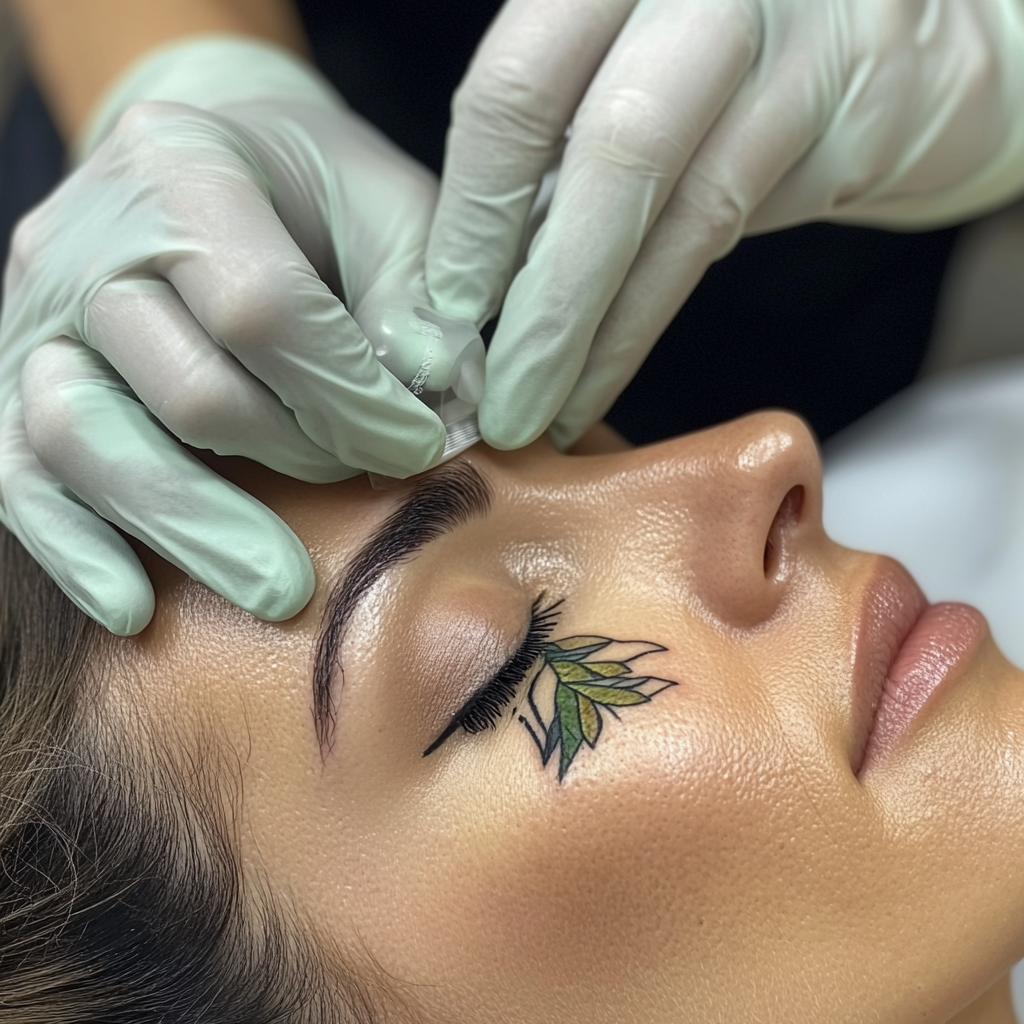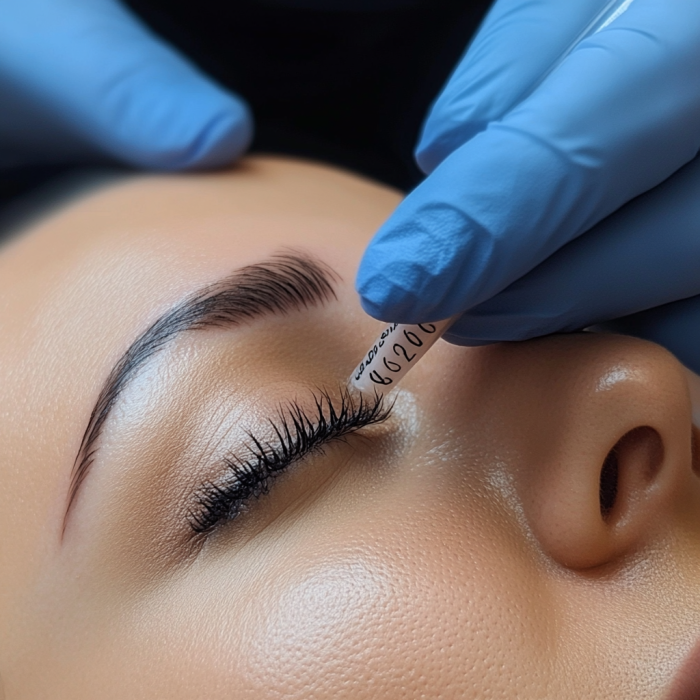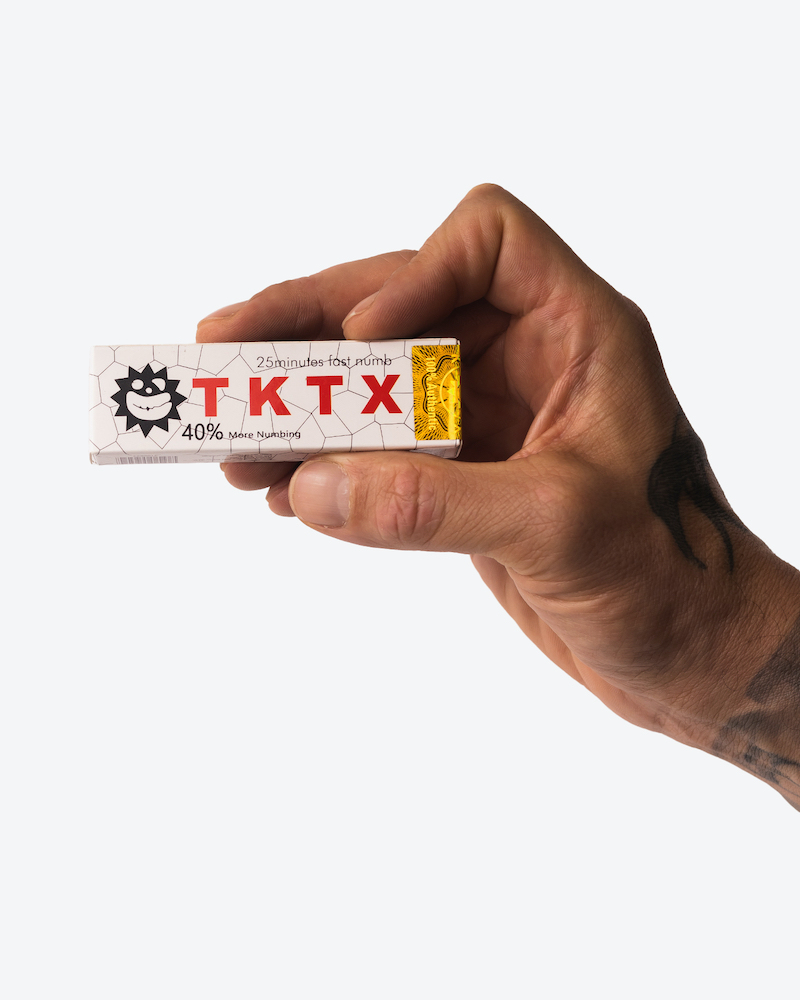
Cosmetic Tattoo Numbing Solution: Effective Pain Relief for Comfortable Sessions
Getting a cosmetic tattoo can be an exciting way to express yourself, but the thought of discomfort might hold some back. We’ve all been there—wishing there was a way to make the process more bearable. Cosmetic tattoo numbing creams have become increasingly popular, with many opting for high-quality creams that effectively reduce pain without affecting the tattoo’s quality. such creams are Yellow TKTX Numbing Cream, Red TKTX Numbing Cream, and White TKTX Numbing Cream.

Water-based formulations ensure that the ink sets properly and the healing process remains smooth. Plus, affordable options mean that more people can enjoy their chosen designs without very costly. As the demand for genuine numbing creams rises, finding the right solution has never been easier, making cosmetic tattoos a more accessible and comfortable experience for everyone.
What Is A Cosmetic Tattoo Numbing Solution
A cosmetic tattoo numbing solution is a topical anesthetic designed to reduce or eliminate pain during cosmetic tattooing, microblading, and other permanent makeup (PMU) procedures. These numbing creams contain active ingredients that provide effective pain relief while ensuring the quality of the tattoo remains intact.
Key Characteristics
ingredients: Commonly include lidocaine, tetracaine, and occasionally epinephrine. For instance, a typical formulation contains Lidocaine 5%, Tetracaine 2%, and Epinephrine 0.02%.
Application: Applied directly to the skin after it has been broken during the procedure. A thin layer is spread using a lip wand or Q-tip and gently rubbed until it disappears.
Purpose: Ensures client comfort by numbing sensitive areas, making procedures more tolerable for those who experience significant discomfort during PMU treatments.
| Ingredient | Concentration |
|---|---|
| Lidocaine | 5% |
| Tetracaine | 2% |
| Epinephrine | 0.02% |
By incorporating these ingredients, numbing creams effectively minimize pain without interfering with ink absorption or the healing process. This ensures that clients can undergo cosmetic tattoo procedures with greater ease and comfort.
How It Works
Cosmetic tattoo numbing solutions minimise discomfort during procedures by targeting pain signals. They block nerve transmission, ensuring a more comfortable experience for our clients.
Ingredients Used
Our tattoo numbing creams contain active ingredients that effectively reduce pain:
Lidocaine: A widely used local anesthetic that prevents pain transmission by blocking nerve signals.
Benzocaine: Provides quick-acting pain relief by numbing the skin.
Tetracaine: Delivers long-lasting numbing effects, ensuring sustained comfort during extended procedures.
Preparation: Clean the skin area thoroughly before application.
Application: Spread a thin layer of numbing cream evenly over the target area.
Waiting Period: Allow the cream to sit for 20-30 minutes to ensure maximum numbing.
Procedure: Proceed with the cosmetic tattooing, with clients experiencing minimal discomfort.
Benefits Of Using Numbing Solutions
Using numbing solutions enhances the cosmetic tattoo experience by providing effective pain relief and reducing client stress. These benefits ensure procedures are more comfortable and enjoyable for everyone involved.
Pain Management
Numbing creams contain active ingredients like lidocaine 5%, tetracaine 2%, and epinephrine 0.02%, effectively numbing the skin during tattoo and PMU procedures. For instance, Magic Numb Gel utilizes this combination to minimise pain, allowing precise ink application without discomfort. Professionals and individuals alike rely on tattoo numbing creams to maintain high-quality results while ensuring client comfort.
Reduced Anxiety
By alleviating pain, numbing solutions significantly lower anxiety levels in clients undergoing cosmetic tattoo procedures. When clients feel less discomfort, they remain more relaxed and calm throughout the process. This improved state enhances their overall experience, leading to higher satisfaction rates and a positive perception of the tattoo session.
Potential Risks And Side Effects
Skin Texture And Tattoo Quality
Numbing creams can change skin texture, making it rubbery or less receptive to ink. Tattoo artists may encounter issues like uneven ink distribution, leading to blurred lines or faded colours. This alteration can extend tattoo sessions by up to 20%, affecting both the application process and the healing time. Also, compromised skin texture might increase the likelihood of infection or allergic reactions during recovery.
Vasoconstriction
Many tattoo-numbing creams include epinephrine, a vasoconstrictor that narrows blood vessels. This action reduces blood flow, causing the skin to appear paler during the tattooing process, which can affect ink absorption and vibrancy. Prolonged vasoconstriction may lead to extended numbness after the procedure and elevate heart rates in individuals sensitive to adrenaline. It’s essential to monitor these effects to ensure client safety and maintain tattoo quality.
Choosing The Right Numbing Solution
Selecting the appropriate numbing solution involves evaluating active ingredients and understanding application methods to ensure optimal comfort during your cosmetic tattoo procedure.



Application and Usage
Proper application ensures effective numbing and minimizes potential side effects. Consider the following methods:
Magic Numb Gel:
Apply after the skin is broken during the tattoo process.
Use a lip wand or Q-tip to spread the gel evenly.
Gently rub until the gel disappears, indicating absorption.
Tattoo Numbing Cream:
Apply a thick layer, approximately 2mm, to the desired area.
Cover with cling film or a numbing garment.
Leave on for 60-90 minutes before starting the tattoo procedure.
Perform a spot test 24 hours before ensure no allergic reactions.
Factors to Consider
When choosing a numbing solution, assess the following:
Onset Time: Ensure the cream activates within the required timeframe before your session.
Duration of Numbness: Match the numbing duration with the length of your tattoo procedure.
Skin Compatibility: Conduct a patch test to prevent allergic reactions or skin irritation.
Procedure Type: Some creams are better suited for specific tattoo techniques or areas of the body.
By carefully evaluating these aspects, you can select a numbing solution that enhances your cosmetic tattoo experience, providing comfort without compromising the quality of your tattoo.
Aftercare Tips
Proper aftercare ensures optimal healing and maintains the quality of your cosmetic tattoo. We follow these essential steps to support our clients post-procedure:
Keep the Area Clean
Gently wash the tattooed area with mild, fragrance-free soap and lukewarm water twice daily.
Pat the area dry with a clean, soft towel to prevent irritation.
Apply Recommended Ointments
Use a thin layer of our approved tattoo numbing cream or a suitable aftercare ointment to keep the skin moisturised.
Avoid overapplying products to allow the skin to breathe and heal properly.
Avoid Direct Sun Exposure
Protect your tattoo from sunlight by wearing loose clothing over the area.
Once healed, apply a broad-spectrum sunscreen with at least SPF 30 to preserve ink vibrancy.
Do Not Scratch or Pick
Refrain from scratching, picking, or peeling the scabs to prevent scarring and ink loss.
Allow any flakes or scabs to naturally fall off as the skin heals.
Stay Hydrated and Maintain a Healthy Diet
Drink plenty of water to keep your skin hydrated from within.
Consume a balanced diet rich in vitamins to support the healing process.
Avoid Swimming and Excessive Sweating
Steer clear of swimming pools, hot tubs, and saunas for at least two weeks post-procedure.
Limit activities that cause excessive sweating to reduce the risk of infection.
Monitor for Signs of Infection
Watch for redness, swelling, increased pain, or unusual discharge around the tattooed area.
Contact a healthcare professional if any signs of infection appear.
Follow Up with Your Technician
Schedule a follow-up appointment to assess healing and address any concerns.
Discuss any additional aftercare products or touch-ups if necessary.
By adhering to these aftercare tips, we ensure that your cosmetic tattoo heals efficiently, maintaining both comfort and the desired aesthetic outcome.
Frequently Asked Questions
What are cosmetic tattoos?
Cosmetic tattoos, also known as permanent makeup or PMU, involve applying pigment to the skin to enhance features like eyebrows, eyeliner, and lips. Unlike traditional tattoos, cosmetic tattoos aim to improve aesthetic appearance subtly and can provide long-lasting results. Common procedures include microblading for eyebrows and lip shading. These tattoos are designed to mimic natural features, offering a convenient solution for those seeking to reduce makeup application time or achieve a consistent look.
What is a cosmetic tattoo numbing solution?
A cosmetic tattoo numbing solution is a topical anesthetic applied to the skin to reduce or eliminate pain during tattooing procedures. These solutions typically contain active ingredients such as lidocaine, tetracaine, and epinephrine. They work by numbing the targeted area, allowing clients to undergo cosmetic tattooing, microblading, and other PMU treatments more comfortably. Proper use of numbing solutions ensures that the procedure is less painful without affecting the quality or absorption of the tattoo ink.
How do numbing creams work during cosmetic tattooing?
Numbing creams work by targeting pain signals and blocking nerve transmission in the skin. Active ingredients like lidocaine, benzocaine, and tetracaine penetrate the skin to numb the area where the tattoo will be applied. This prevents pain receptors from sending pain signals to the brain, ensuring a more comfortable experience for the client. Proper application involves cleaning the skin, evenly spreading the cream, allowing it to sit for the recommended time, and then proceeding with the tattooing process with minimal discomfort.
What are the benefits of using numbing solutions for cosmetic tattoos?
Using numbing solutions during cosmetic tattoos offers several benefits. They effectively alleviate pain, making the procedure more comfortable for clients. This reduction in discomfort can lower anxiety levels, leading to a more relaxed and positive experience. Additionally, numbing creams allow for precise ink application without interruptions, enhancing the quality of the tattoo. Overall, numbing solutions contribute to higher client satisfaction and make cosmetic tattoos accessible to those who might otherwise avoid them due to fear of pain.
What are the potential risks and side effects of numbing creams?
While numbing creams enhance comfort during cosmetic tattoos, they carry potential risks and side effects. These can include altered skin texture, making it rubbery or less receptive to ink, which may result in uneven ink distribution or blurred lines. Prolonged use of ingredients like epinephrine can lead to extended numbness and elevated heart rates in sensitive individuals. There is also a risk of allergic reactions or infections during the healing process. It’s important to use high-quality numbing solutions and monitor any adverse effects to ensure client safety and maintain tattoo quality.
How should numbing creams be applied before a cosmetic tattoo?
Proper application of numbing creams involves several steps to ensure effectiveness and safety. First, clean the skin thoroughly to remove any oils or impurities. Apply a thin, even layer of the numbing cream to the area to be tattooed. Ensure the cream covers the entire region uniformly to achieve consistent numbness. Allow sufficient time for the cream to take effect, usually around 20-30 minutes, depending on the product’s instructions. After the waiting period, gently wipe off any excess cream before starting the tattoo procedure to prevent interference with ink absorption.
How to choose the right numbing solution for cosmetic tattoos?
Choosing the right numbing solution involves evaluating its active ingredients, onset time, duration of numbness, and skin compatibility. Look for creams containing effective anesthetics like lidocaine, tetracaine, or prilocaine, which provide reliable pain relief. Consider the formulation’s onset time to ensure it aligns with your appointment schedule and the duration to cover the entire procedure. Additionally, assess skin compatibility to prevent adverse reactions by selecting products suited to your skin type. Professional recommendations and client reviews can also guide you in selecting the most suitable numbing solution for optimal comfort and tattoo quality.
What aftercare is recommended following a cosmetic tattoo procedure?
Proper aftercare is essential to ensure optimal healing and maintain the quality of cosmetic tattoos. Clients should keep the tattooed area clean by gently washing it with mild soap and water. Apply recommended ointments to moisturize and protect the skin. Avoid direct sun exposure, swimming, and excessive sweating for at least two weeks to prevent infection and fading. Refrain from scratching or picking at the tattooed area to allow proper healing. Staying hydrated and maintaining a healthy diet can also support the healing process. Monitoring for any signs of infection and following up with the technician as needed will help achieve the best aesthetic outcome.
